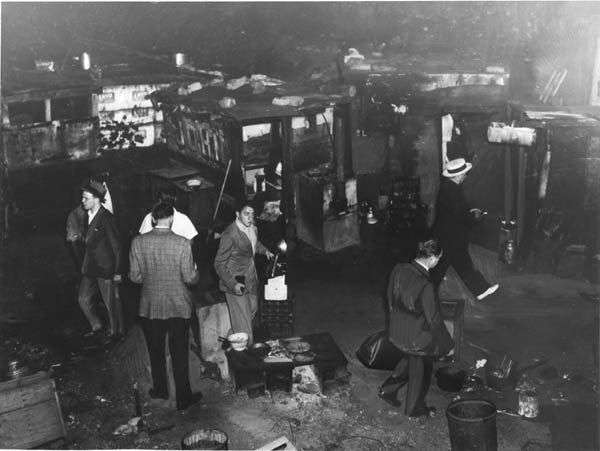Kingsbury Run

Kingsbury Run refers to an area along the east side of Cleveland near Shaker Heights that stretched westward through Kinsman Avenue and down to the Cuyahoga River. It also included a natural watershed that runs through East 79th Street in Cleveland where natural creeks drain storm water into the Cuyahoga River from areas that are now known as Warrensville Heights and Maple Heights. The name Kingsbury Run comes from James Kingsbury, the first inhabitant of Newburgh (1797) and one of the earliest settlers of the Western Reserve area. In the late 1800s, the city commissioned a new sewer tunnel system project. This was constructed to pass through the Kingsbury Run area under Kinsman Avenue.
The Kingsbury Run stretch of land separated Cleveland from Newburgh and became an area for railroad traffic. Industry boomed in this area, including the crude oil refinery belonging to John D, Rockefeller and the oil and naphtha works of William Halsey Doan. The boom years, however, were followed by a wave of poverty. During the Great Depression, the industry began to collapse and Cleveland's workforce suffered. Minorities and immigrants were among the hardest hit. The groups that were affected the worst included African Americans, particularly those from the Cedar-Central area; a Hungarian community in Kinsman to the east of Cedar-Central; Czech and Slovak neighborhoods east of downtown along the lakefront; and Polish, Czech and Irish neighborhoods along the banks of the Cuyahoga River. Many of these displaced and out of work people took up residence in abandoned plots of land and formed communities of their own that became known as shantytowns. One of these types of settlement formed in Kingsbury Run.
The impoverished population of the area continued to grow into the late 1930s. A large wave of new residents moved in from other lakefront shantytowns as these were being removed by the city. It was during this time that Kingsbury Run grew to notoriety by being thrust into the spotlight as a crime scene. Many of the victims of the still unidentified Kingsbury Run Butcher were discovered in the shantytown. Hinting at the gruesome nature of the killings, the case soon became known as the Cleveland Torso Murders.
Beginning with the discovery of the first victim in September of 1934 thirteen people were brutally murdered over the course of four years. All of them were decapitated, some while they were still alive. The first victim was a woman determined to be in her mid-30s was never identified and was referred to as “The Lady of the Lake.” Though this killing was not first attributed to the serial killer at the time, it would be considered as the killer's first victim later in the investigation. In 1936 the recently appointed Cleveland Safety Director Eliot Ness was placed on the case.
In 1938, Cleveland safety director Eliot Ness ordered and conducted a raid of the area that resulted in the eviction of 300 squatters as well as the burning of at least 100 shanty homes. The murders continued until the last victim was discovered in August 1938, after which the murders simply ceased. The Torso Murders case remains unsolved. Two decades later, the city set out to redevelop Kingsbury Run into a low-income housing area as part of the Garden Valley federal urban renewal project. Constructed on a slag dump donated by Republic Steel, Garden Valley was emblematic of a national tendency in the 1950s to relegate renewal housing to marginal inner-city lands.
Kingsbury Run is still remembered today, mostly for a violent period of time in Cleveland history. When city government makes reference to this area, it is mostly to note the vast sewer system that runs through it.
Images




